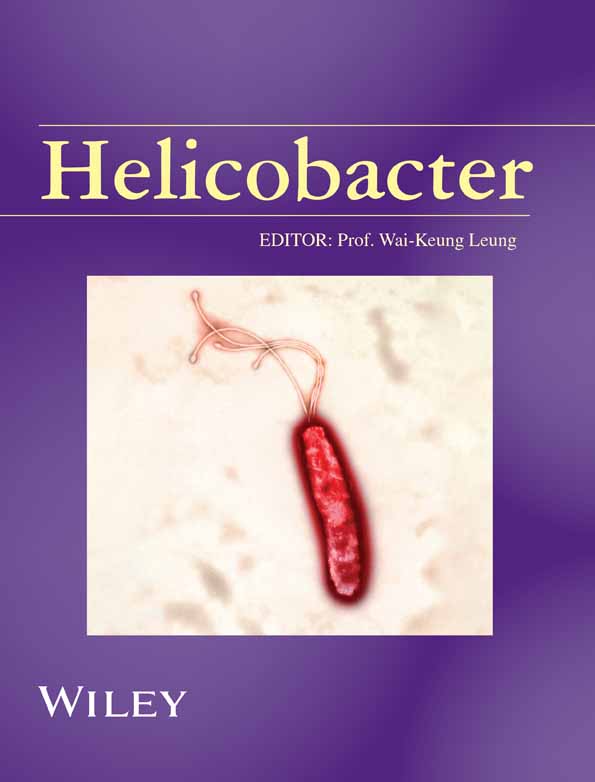Dual vs. Triple Therapy for Childhood Helicobacter pylori Gastritis: a Double-Blind Randomized Multicentre Trial
ABSTRACT
Background. Data on the efficacy of eradication treatment for Helicobacter pylori gastritis in children are scarce.
Aim. To evaluate the efficacy of triple therapy with lansoprazole plus amoxicillin and tinidazole vs. dual therapy with amoxicillin and tinidazole in a double-blind randomized multicentre trial, and the usefulness of eradication in terms of long-term symptom resolution.
Subjects. We enrolled 43 consecutive children undergoing endoscopy for upper gastrointestinal dyspepsia with H. pylori gastritis. They underwent a 13C-urea breath test, completed a 2-week symptom diary card, and were randomized. Treatment was given in a Redidose box (Redidose Company Ltd., Brighton, UK) containing either lansoprazole-amoxicillin-tinidazole (triple therapy) or placebo plus amoxicillin-tinidazole (dual therapy) for 1 week. The completion of a 2-week symptom diary card and the performance of a breath test were repeated 6 weeks and 6 months after the end of therapy. One to two years later, a structured telephone interview was conducted with 36 of the children.
Results. According to the breath test, 6 weeks after the end of therapy H. pylori was eradicated in 15 of 22 children on triple therapy [68.2%; 95% confidence interval (CI) = 45–88] and in 15 of 21 children on dual therapy (71%; 95% CI = 48–89; not significant), and 6 months after the end of therapy it was eradicated in 16 of 22 children on triple therapy (72.7%) and in 15 of 21 children on dual therapy. Six months after therapy, symptoms were analysed in 11 H. pylori-positive and 31 H. pylori-negative children, and it was found that dyspeptic symptoms had disappeared or improved in both groups, with no difference between them. One to two years later, 36 children were interviewed. Epigastric pain had recurred in three of 26 H. pylori-negative and in seven of 10 H. pylori-positive children (p = .001); in three of the latter, pain was severe and required additional treatment.
Conclusion. One-week triple or dual therapy with two antibiotics achieved similar eradication rates. Soon after treatment, symptoms disappeared or improved in most children irrespective of eradication, but epigastric pain recurred in the majority of the still-infected children within 2 years.




